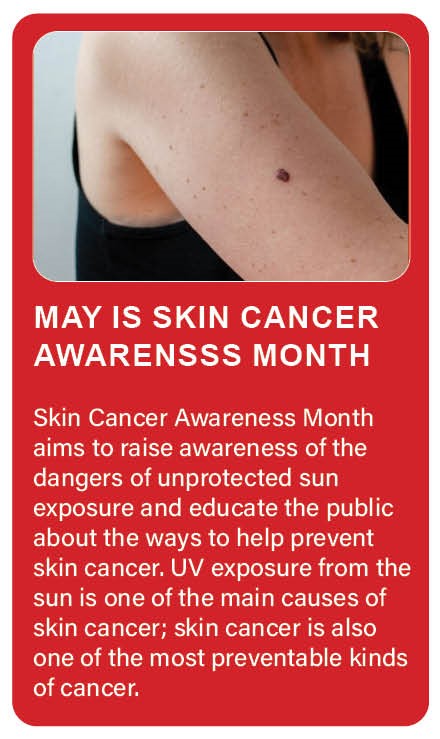Protect Yourself From These 3 Common Skin Cancers
Protecting your skin from the sun is something to stay on top of all year long, not just in summer. While taking care of your skin may seem like only a cosmetic concern, it goes a lot deeper than that.
 “The rays from the sun give off several different types of ultraviolent rays like UVA, UVB and UVC,” says Dr. Peter Knabel, a dermatologist at Aurora Health Care. “These ultraviolet rays can be harmful to our skin and can cause skin aging, sunburns and skin cancer.”
“The rays from the sun give off several different types of ultraviolent rays like UVA, UVB and UVC,” says Dr. Peter Knabel, a dermatologist at Aurora Health Care. “These ultraviolet rays can be harmful to our skin and can cause skin aging, sunburns and skin cancer.”
Not all skin cancers are the same. Basal cell carcinoma, squamous cell carcinoma and melanoma are three different, yet common types of skin cancer.
Basal cell carcinoma
Basal cells are in the lower part of the skin’s top layer. One of the more common skin cancer types, basal cell carcinoma, is when skin cancer forms in this layer. It is the most common and least aggressive form of skin cancer followed by squamous cell carcinoma. It often grows more slowly and develops in areas susceptible to the sun, like the head, neck and face. Keep an eye out for patches that might look like a scar or an itchy, red raised area of skin.
Squamous cell carcinoma
Squamous cells are in the upper part of the skin’s top layer, and when skin cancer forms here, it is called squamous cell carcinoma. Like basal cell carcinoma, squamous cell carcinoma often can form on areas that are exposed to the sun, like your face, neck and lips. It can often look like a red, scaly patch, an open sore, or a brown spot like an age spot.
Melanoma
Melanoma forms in skin cells that produce melanin, which regulates skin pigmentation. It’s the most aggressive form of skin cancer and is a major concern with its high risk of spreading. It most frequently develops on the neck, face, chest, back, and legs. A possible sign of melanoma can be a newly formed spot or one that is changing in appearance.
Dr. Knabel offers these tips for protecting your skin from these types of skin cancer:
- Avoid direct sunlight: Avoid direct sunlight for long periods of time, especially midday hours.
- Wear sunscreen: It’s important to wear sunscreen daily to protect your skin, but this is especially true when spending time in the sun. Reapply every 1-2 hours for maximum protection, particularly when sweating or swimming. Don’t forget sunscreen lip balm to protect your lips as well.
- Wear a hat outside: A wide brimmed hat can protect the front and side of your face, scalp and ears.
- Self-skin exams: Check yourself monthly for any new or changing brown or black moles. If its appearance changes, you should get it checked by your primary care physician or dermatologist.
Article contributed by: Hannah Koerner
Tags: #carcinoma, #melanoma, #parishnurse, #skincancer

Comments are closed here.